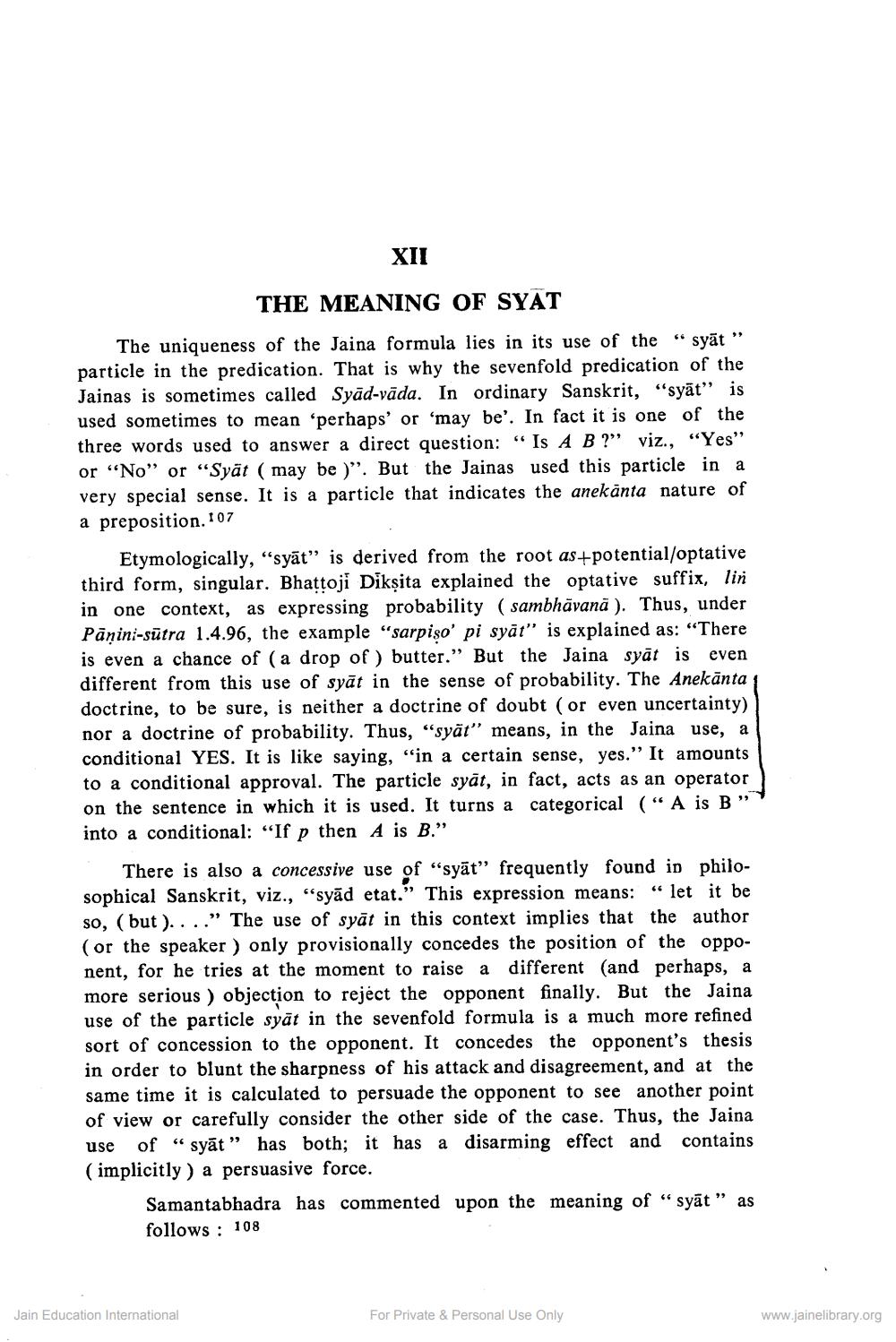________________
XII
THE MEANING OF SYAT The uniqueness of the Jaina formula lies in its use of the “syāt” particle in the predication. That is why the sevenfold predication of the Jainas is sometimes called Syād-vāda. In ordinary Sanskrit, "syāt" is used sometimes to mean “perhaps' or 'may be'. In fact it is one of the three words used to answer a direct question: “Is A B ?” viz., “Yes" or “No” or “Syät (may be )". But the Jainas used this particle in a very special sense. It is a particle that indicates the anekanta nature of a preposition. 107
Etymologically, “syāt” is derived from the root as+potential/optative third form, singular. Bhattoji Dikșita explained the optative suffix, lin in one context, as expressing probability (sambhāvanā). Thus, under Pāṇini-sūtra 1.4.96, the example "sarpiso' pi syāt" is explained as: “There is even a chance of (a drop of) butter.” But the Jaina syāt is even different from this use of syāt in the sense of probability. The Anekānta doctrine, to be sure, is neither a doctrine of doubt (or even uncertainty) nor a doctrine of probability. Thus, “syät" means, in the Jaina use, a conditional YES. It is like saying, “in a certain sense, yes." It amounts to a conditional approval. The particle syāt, in fact, acts as an operator on the sentence in which it is used. It turns a categorical ("A is B” into a conditional: “If p then A is B.”
There is also a concessive use of "syāt” frequently found in philosophical Sanskrit, viz., “syad etat.” This expression means: “ let it be so, (but)....” The use of syāt in this context implies that the author (or the speaker) only provisionally concedes the position of the opponent, for he tries at the moment to raise a different and perhaps, a more serious ) objection to reject the opponent finally. But the Jaina use of the particle syāt in the sevenfold formula is a much more refined sort of concession to the opponent. It concedes the opponent's thesis in order to blunt the sharpness of his attack and disagreement, and at the same time it is calculated to persuade the opponent to see another point of view or carefully consider the other side of the case. Thus, the Jaina use of “syāt” has both; it has a disarming effect and contains (implicitly) a persuasive force.
Samantabhadra has commented upon the meaning of “syāt” as follows : 108
Jain Education International
For Private & Personal Use Only
www.jainelibrary.org




